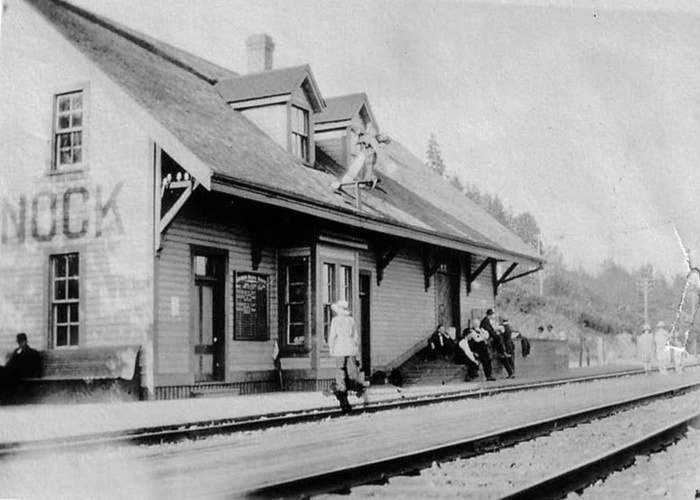The name Whonnock is an Anglicized version of what the early settlers recorded as "Honnok," or "Ho'nak."
This was the name of the people and, by extension, the village where they lived on what is now Whonnock Indian Reserve No. 1.
The Whonnocks reportedly told Father LeJeune of the Order of Mary Immaculate in Mission that the name meant the place of the humpback salmon.
A more recent phonetic version of the name, Xwô:leqw, comes from linguist Brent Douglas Galloway, an authority in the Halkomelem languages. His interpretation of the meaning of the word is "the place where there are (always) humpback salmon" – close to what the Whonnocks had told Father LeJeune.
Today's community of Whonnock owes its early start to the coming of the transcontinental railway. The contract for the building of the railway called for stations to be built every 10 miles, and Whonnock happened to be 10 miles from Port Hammond.
Rather than adopting the Indian place name with its uncertain spelling, the railroad builders opted to call this stop "Wharnock," a familiar surname, but without any affiliation to Whonnock. Wharnock was the name that went up on the station building when it was ready in 1884, and that was also the name for the stop on CPR's timetables.
However, the residents of the fledgling community were not happy with the name Wharnock. "The place is more correctly known as 'Whonnock' from the Indian village in the vicinity," says the application for the establishment of the post office in 1884. To the familiar "Honnok" the residents had added the 'W,' and they had changed the 'k' to 'ck.' The postmaster general in Ottawa agreed that the new post office should be named Whonnock.
The CPR did not follow suit and continued using the name Wharnock for more than 20 years. The newspapers also used Warnock or Wharnock as the place name, and at that time many of the newcomers to the community favoured this British version over its Indian equivalent. Both names, Whonnock and Wharnock, continued to exist side by side until after 1905, when all parties started using the name Whonnock.
Years passed, but then, in 1939, the residents of Whonnock were surprised and mystified to see the name on the station changed from Whonnock to Whonock with only one 'N.' What had happened was that the Canadian Permanent Committee on geographical names in Ottawa had adopted the writing "Whonock" to put the name in line with the spelling of the name of the Indian Reserve. The CPR and later the post office adopted this new official spelling.
The mutilation of the community's name angered many residents who "... had a distaste for the name of 'Whonock'." They felt that a second 'N' was needed for a proper pronunciation of the name. Many never stopped writing Whonnock and the mail went through anyway.
During the war years, there were other battles to fight, but in the 1960s a handful of volunteers took action preparing and presenting a petition for the return to the old spelling to the governments in Victoria and Ottawa.
Mostly by house-to-house visits the few volunteers collected 603 signatures from an estimated population of 644. Of those 603 not less than 588 supported a return to the original spelling.
In the process of collecting signatures the community's borders were also confirmed.
The petition was successful, and in 1969, with agreement of the Kwantlens, who had inherited the Whonnock reserves, the Committee on Geographical Names reinstated the spelling of Whonnock, to the great satisfaction of the residents.
Fred Braches is a local historian who lives in Whonnock.
